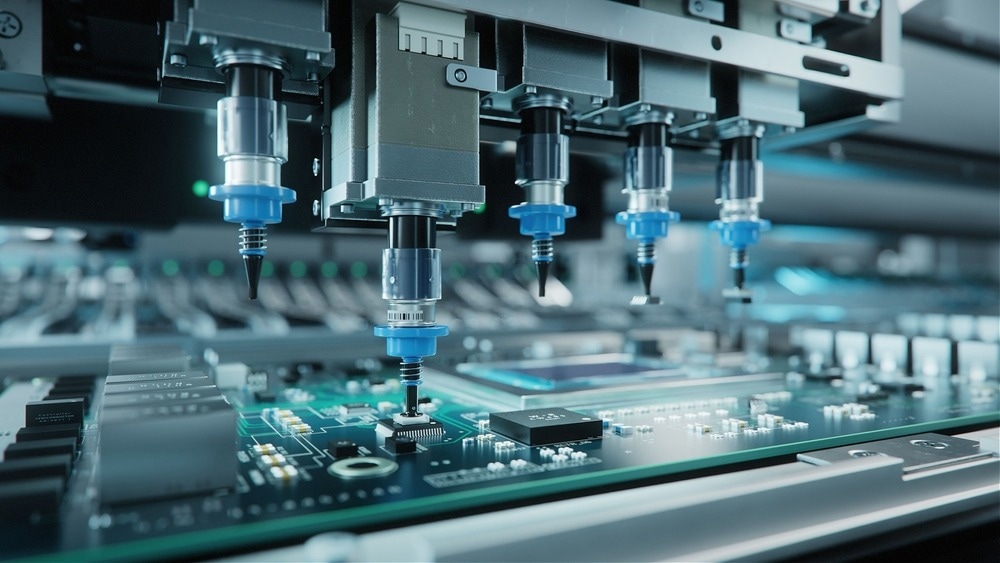A scientific team from the University of Tennessee has discovered that silicon may support a novel type of superconductivity that could speed up the development of the emerging quantum technology industry.

Image Credit: PastryShop/Shutterstock.com
The excitement surrounding this achievement is propelled by the fact that silicon is a component of an electronics sector that will soon be worth a trillion dollars. Silicon-based microchips are a well-established manufacturing process which will hasten their widespread adoption.
Properties of Superconductors
A substance that reaches superconductivity, a state of matter in which magnetic forces cannot penetrate and there is no electrical resistance, is referred to as a superconductor. With a superconductor, an electric current can last forever. Typically, superconductivity can only be reached at extremely low temperatures.
Ultrasensitive magnetic sensors, quantum computers, powerful electromagnets for MRI machines and particle accelerators are some example applications that use superconductors.
Superconductivity is a spectacular illustration of macroscopic quantum physics in action. Properties of electrons drive the phenomena of superconductivity.
In a vacuum, negatively charged electrons repel one another. Yet, there are around 100 billion times one trillion electrons and positive ions in a solid-state material like metals and semiconductors. The interactions between these particles lead to many interesting effects.
The level of resistance in current flow is influenced by a number of variables, including temperature, composition, and geometry. The resistance of a conductor follows the temperature change in a linear pattern. When the temperature increases, the resistance also increases, and vice versa.
The atoms within the lattice structure of a metal begin vigorously vibrating as the temperature of the conducting material rises. This impedes the flow of electrons. On the other hand, when a conductor is cooled, atoms move less vigorously and have reduced resistance to current as a result.
However, the resistance-temperature relationship remains linear only up to a certain point, at which point all resistance abruptly vanishes, and the transition to the superconducting state takes place. The critical temperature is the point at which a material transforms from an ordinary conductor to a superconductor.
While electrons resist other electrons due to their negative charge, they are attracted to the positive ions that make up the crystal lattice structure of metallic materials. The pioneering theory of superconductivity was formulated by John Bardeen, Leon Cooper, and John Robert Schrieffer (BCS) in 1957.
The BCS hypothesis states that the attraction between a free electron and lattice ions pulls the positive ions in close proximity to the passing electron, creating an area with a greater density of positive charges. This area of higher positive charge density also travels with the motion of the electron. Another electron with the opposite spin is drawn to the area in response. Hence, the crystal lattice serves as a conduit for the formation of a “Cooper pair” of electrons.
The condensates resulting in Cooper pairs enable superconductivity—that is, current flow without resistance or dissipation. This method results in common superconductors like lead, tin, or aluminium, which are referred to as S–wave superconductors.
Yet, when the electrostatic attraction between electrons is strong, they pair up in higher angular momentum states leading to a different type of superconductor. This type of superconductors, also called D-wave superconductor, is made of copper and oxygen, known as cuprates.
The breakthrough chiral superconductivity observed by the research group at University of Tennessee is based on cuprates.
Chiral Superconductivity on Silicon
In their research, scientists grew a third of a monolayer of tin atoms on a silicon substrate in an effort to mimic the physics of cuprates, the most well-known high-temperature superconductors. The tin electrons in this situation are so strongly attracted to one another that they are immobile and lack superconducting.
In order to overcome this resistance, researchers added boron atoms to the silicon layer's crystal structure. Up to 10% of the electrons in the tin layer are removed by such "inclusions," leaving the remaining electrons free to move around inside the layer. Such a modified material exhibits metallic and superconducting qualities, according to experiments. Moreover, it has a critical temperature that is higher than practically all analogues of elementary superconductors.
The researchers also discovered that the tin and silicon combination displays chiral superconducting characteristics. Chiral superconductors are unique topological materials with finite angular momentum Cooper pairs that spontaneously break time-reversal symmetry by rotating around a certain chiral axis. In quantum physics, a wave function that can be left, right, or "topologically trivial" mathematically encodes the characteristics of a single or pair of electrons. According to the findings, the tin layer's superconducting wave function is really directed clockwise in one area of the sample and anticlockwise in another. Although they evolve over time, they always rotate in different directions.
Moreover, research has revealed that the novel superconductor exhibits two one-dimensional conduction channels that follow the sample's perimeter. These channels are filled with exotic Majorana particles, which, under specific circumstances, combine a particle and an antiparticle.
Future Outlook
According to researchers, Majorana particles are promising building blocks for quantum computers since they are topologically protected and immune to environmental changes. The scientists think that combining the unusual features of superconductors with a platform made of silicon-based materials that is easily scalable would bring quantum technologies closer to being produced on an industrial scale.
More from AZoQuantum: One Step Closer to a Quantum Computing Future
References and Further Reading
Ming, F., Wu, X., Chen, C. et al. Evidence for chiral superconductivity on a silicon surface.Nat. Phys. (2023). https://doi.org/10.1038/s41567-022-01889-1
Scalipino, D. J. A common thread: the pairing interaction for unconventional superconductors. Rev. Mod. Phys. 84, 1383–1417 (2012).
University of Tennessee at Knoxville. (09 February 2023) Evidence for a chiral superconductor could bring quantum computing closer to the mainstream. [Online] Phys.org. Available at: https://phys.org/news/2023-02-evidence-chiral-superconductor-quantum-closer.htm
Disclaimer: The views expressed here are those of the author expressed in their private capacity and do not necessarily represent the views of AZoM.com Limited T/A AZoNetwork the owner and operator of this website. This disclaimer forms part of the Terms and conditions of use of this website.